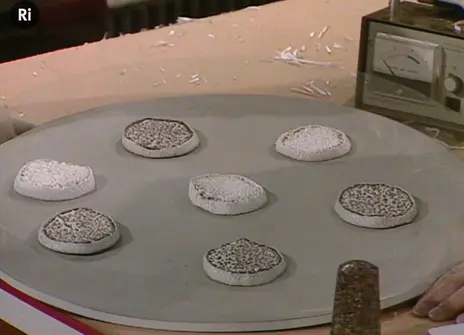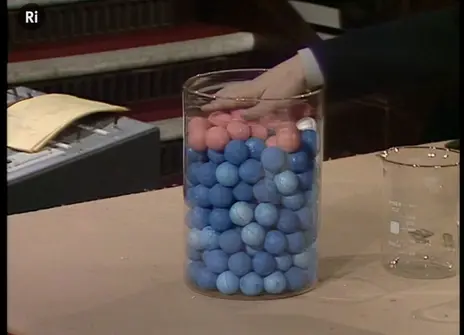About the 1984 CHRISTMAS LECTURES
From the 1984 lecture programme:
We are all different, in looks, in behaviour, and in our susceptibility to disease. Many of these differences are reflected in the chemical makeup of our body and its cells, and most such differences are inherited.
The basic determinants of inheritance, the genes, make up the chromosomes that are found in the nucleus at the centre of every cell. The formal mechanics of inheritance and chromosome behaviour were worked out by Mendel, and later, his successors in the early years of this century. But the chemistry of the genes starts with the DNA double helix of Watson and Crick.
The language of the genes has now been deciphered, so that the small misprint that can cause a major disease, such as the sickle-cell anaemia found mainly in people of African origin, can be read and interpreted.
New developments in genetics have made it possible to study the chemistry of the genes to an extent that could hardly even have been imagined only ten or fifteen years ago. This new genetics, or genetic engineering as it is sometimes called, is beginning to uncover the secrets underlying individual differences, and to provide the tools for understanding and perhaps correcting diseases with a genetic basis.
Now we are beginning to see what it might be that turns a normal cell into a cancer cell, and why the body sometimes attacks itself to produce diseases such as diabetes in children or rheumatoid arthritis.
When will the new genetics tell us why, or whether, one person may become a gifted painter, another a musician, another an athlete and another a mathematician? How far can we go in explaining the infinite variety of mankind?
Lecture 1 – We are all different
From the 1984 lecture programme:
Everybody looks different, apart from identical twins, and many of the differences are inherited. Eye colour, hair colour, taste, smell, blood types and, of course, sex all vary and are inherited. The simplest patterns of inheritance in families gave Mendel his insight into the underlying mechanism.
The body is made up of many, many cells, all originally coming from one cell, the fertilised egg, which is the result of a fusion between a single egg and sperm. In its centre, each cell has a nucleus that contains the chromosomes that carry the determinants of inheritance, the genes.
One set of chromosomes comes from the father, the other from the mother and if the father's set in the sperm includes the Y rather than the X chromosome, then you are a male.
Variation in the genes can cause many diseases as well as give rise to the normal differences which characterise individuals and populations, and which can be used to detect false paternity or, sometimes, even a murderer. The variety of mankind is extraordinary, the challenge is to comprehend it.






